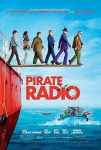THE
YEAR OF 1954
In January 1954,
I bought a dualwave "Chassis Radio" at Maxwell's, Elizabeth St, Melbourne.
This was sold
without a cabinet, and I used this right up until about 1955. This lived on the small table in our bedroom - that
table is still in good condition and is now in the little room next to the den here in Mont Albert!
I bought that
radio from my wages of 21 shillings a week earned at Buscombe’s
chemist - I remember
that I had been allowed to take some time off on a
Saturday morning
to go into town and buy the radio. I dragged it back in the
train to the
chemist, in a large cardboard box.
I ran an antenna
from our upstairs bedroom window (shared with my brother) to a large ventilation chimney on top of the horse stables used
by the bakery, at the rear of our back yard. Parts of that antenna are still there, today!
Later
In 1954 I bought a secondhand dualwave mantel radio – this sat on the mantelpiece in our bedroom
- I think we got this at a junk shop in Burke d, Camberwell.
I painted the
cabinet light blue gloss. This set covered the SW bands from 16 to 49 metres – the 49 metre band was not overed by my
main “chassis radio” which only tuned 42 to 13 metres.
When I was using
the “Chassis radio” I was able to hear stations in the 49 metre band by tuning to their double spots (“IF
images”) which would be fall in the 7 MHz range. The IF of the Chassis was 465 kHz (not the standard 455 kHz), and double
spots would occur 930 kHz away. Thus, a station on 6000 kHz would be audible on the double-spot image frequency of 7930
KHz.
In
1954, I was attending Camberwell High
School, and several of my schoolmates were also interested
in radio, all of us read the Radio and Hobbies magazines avidly!
We used to look
at the adverts which had started to appear for war surplus receivers!
RADIO
ENGINEERING TEXTBOOK
In the same year,
I bought a text book entitled “Radio Engineering”, published in the UK
in 1951. I still have this reference, which gave me a good grounding in the theory of radio communications, propagation, and
transmission.
SHORTWAVE
REVELATIONS
The purchase
of the Chassis really sparked my interest in Shortwave long distance radio propagation!

